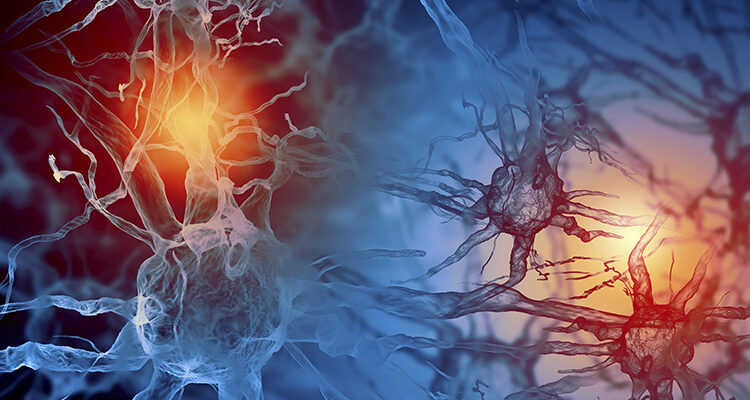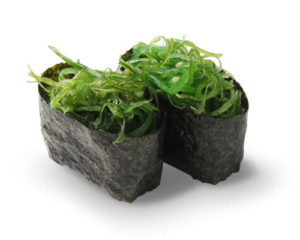
Endocrine Disrupting Chemicals & Our Health
Introduction to Endocrine Disrupting Chemicals (EDCs)
EDCs are a chemical or a mix of chemicals that alter the function of the endocrine (hormone) system in our body. Of the hundreds of thousands of manufactured chemicals, it is estimated that over 1000 may have endocrine influencing actions. Common EDCs are found in plastics (bisphenol A), plasticizers (phthalates), industrial solvents or lubricants, and their by-products (polychlorinated biphenyls, polybrominated biphenyls, dioxins), pesticides (methoxychlor, chlorpyrifos, dichlorodiphenyltrichloroethane), fungicides (vinclozolin), and pharmaceutical agents (diethylstilbestrol)1. There are multiple routes of exposure to the above EDCs, including air, water, food, and consumer products, and some can even affect our offspring! EDCs can affect us at extremely low doses, and we need more data on the accumulation of exposure to the chemicals over time and what effects they are having that is transgenerational.
The Next Generation and EDCs
The World Health Organization (WHO) state that EDCs are “found in various materials such as pesticides, metals, additives or contaminants in food, and personal care products”. The WHO further comments that it is pregnant mothers and children that are the most vulnerable populations for the effects of EDCs due to exposures that can impact development and neurodevelopment. These adverse effects from exposure may not become evident until later in life2 as even low doses of EDCs are suspected to cause incomplete methylation of specific gene regions in the young brain and therefore impair neural development and brain functions across generations3.
How EDCs Affect Humans
EDCs can disrupt endocrine (hormone) systems by mimicking or blocking a natural hormone. As hormone blockers an EDC can bind to the hormone receptor and blocked it so it cannot be activated, even if the natural hormone is present.
Some examples are:
- Organophosphates (found in some pesticides) are neurologically damaging, they are linked to an increased incidence of ADHD and can also impact the IQ in children4
- EDCs can impact brain function and research is suggesting a relationship between these toxins and neuropsychiatric disorders, including autism, learning disabilities and aggressiveness3
- Diphenyldichloroethene (DDE) and phthalates may contribute significantly to common reproductive disorders in women, including endometriosis and fibroids5
- Research has found EDCs can also impact the development of metabolic disease, clinically expressed as obesity, metabolic syndrome, diabetes mellitus, non-alcoholic fatty liver disease1 and also interfere with neuroendocrine control of appetite and satiety6
- Evidence is suggesting a link to conditions including lowered libido, impotency, sterility, fibroids, early menopause, osteoporosis in females7
- In males evidence suggests EDCs may play a role in oligospermia, testicular cancer, cryptorchidism, hypospadias, gynecomastia, sterility and prostatic problems7
Some EDCs are also Obesogens
An obesogen can disrupts the normal development and can increase the risk of obesity and weight gain. Avoiding early exposure to children and babies is important, especially during pregnancy. Exposure can affect the number and size of adipose (fat) cells. Early exposure can change our fat cell makeup for life. Once Xenoestrogens enter the bloodstream, they are not biodegradable and are readily stored in our fat cells.
Some EDCs are Xenoestrogens
Xenoestrogens are a type of EDC that have estrogen-like or anti-androgenic affects and interfere with the production, release, transport, metabolism, binding, or elimination of natural hormones. Xenoestrogens can sometimes increase the total amount of oestrogens present and cause oestrogen dominance. Xenoestrogens may even be a risk factor for cervical cancer8. Common Xenoestrogens include BPA, bisphenol S, phthalates and parabens9.
Persistent Organic Pollutants (POPs):
These are man-made compounds that don’t easily break down, they can persist and accumulate in our bodies10. POPs are linked to an increased risk of T2DM as they can cause epigenetic changes that are transgenerational in relation to sugar metabolism.1 POPs are also called “diabetogens” and can damage the pancreas (by binding to the receptor sites)11. There may also be an increased risk of Dementia.12 The most well-known POPs are PCBs, DDT, and dioxins.
Toxic Halogens – Fluoride, Chloride & Bromide
In Australia sodium silicofluoride is added to our water supplies, while sodium fluoride and calcium fluoride are primarily found in toothpaste and dental treatments. Fluoride is also found in certain pesticides, medications, processed food and drinks. Elevated fluoride from drinking water, toothpaste and fluoride products can affect human thyroid hormones (T3, T4 and TSH)13 in adults and children14. This may also equate to lower IQ scores due to fluoride14. There is also a potential relationship between the effects of fluoride exposure, inflammation and the pathogenesis of many significant diseases including Alzheimer’s disease15. Interestingly adding fluoride to water is now banned in Europe. Magnesium and iodine work antagonistically to fluoride, as magnesium inhibits the absorption of fluoride into cells and iodine competes for absorption with fluoride into the thyroid gland.
Certain pesticides contain chlorine and bromine, and these compounds may contribute to female infertility and male semen quality15. Flame retardants are often made from halogenated BPA, and the brominated flame retardant PBDE was banned in Australia in 2005. Avoiding chlorine compounds (of which there are several in our drinking water) would require filtering water and using a shower filter as chlorine vapours from a 10 minute shower may be greater than the amount of chlorine from around two litres of water.
Bromatesare often manmade and more harmful to health than bromides, which can be naturally occurring. Bromide and chloride may be more of a problem to those who are iodine deficient, or those who have a higher exposure over time. So sufficient iodine may be protective.
Detoxing EDCs
There are specific nutrients, foods, phytomedicines and supplements that can reduce the absorption, assist the detoxification, and protect the body from many of these EDCs. For specifics consult your naturopath. There are a few general things to do to detoxify these substances:
- Eat a diet high in fibre16
- Increase glutathione production16
- Eat greens daily, especially the Brassica family
As avoidance is the best option, see the graph below for major sources and how to swap out and avoid toxic sources.
| Common EDC Sources | Solutions |
| Tap Water – Hormones, pharmaceuticals, pesticides, fluoride, chlorine, chloramines and chloroform can often be found in drinking water | – Drink filtered water or fresh water from a pure stream or spring (tested). Use a shower filter that filters out a good amount of fluoride – Try a vitamin C bath using ascorbic acid or sodium ascorbate (apparently 1 tsp is an effective de-chlorination agent) |
| Plastic food containers – BPA & phthalates are also obesogens NOTE: BPA It is also found on thermal receipts, coating in tinned foods, dental sealants Phthalates (used mostly as plasticizers to increase the flexibility, transparency and durability of plastic materials) are also found in many products including glues, paints, packaging, children’s toys, electronics, flooring, medical equipment, personal care products, air fresheners, food products, pharmaceuticals and textiles. | – Put your food in glass containers not plastic and drink out of a glass bottle – Get meats & foods that are not wrapped in plastic especially soft plastic where possible – Avoid tinned foods if lined with BPA – Consider options that are plastic free or lower in plastic when choosing goods including toys and house hold furnishings – ventilate your house as much as possible & use a vacuum with a HEPA filter |
| Pesticides – A significant source of many EDCs NOTE: Fatty foods such as oils, dairy, meat, and fish contain the highest level of phthalates (an obesogen) | -Eat organic when you can especially animal fatty foods – meat, eggs, butter, dairy and – Choose wild caught, deep sea fish from less polluted water (not tinned) |
| Skincare, shampoo and fragrances – Phthalates & parabens are often found in perfumes, nail polish & removers, colognes, aftershave, deodorant and lotions | – Choose natural shampoos, perfumes, deodorants, nail polish, moisturisers and all skin care products and cleaning products (esp fabric softeners) |
| Anti-bacterial hand wash – avoid products containing triclosan. | – There are many natural antibacterial soaps and sprays, read the labels. |
| Car exhaust fumes – contain xenoestrogens | – Consider an air filter if you live close to a highway, or use trees/plants as a natural filter |
| Some bedding contains pesticides – Ultrafresh treated pillows and bedding contain thiabendazole which is a toxic pesticide17 Clothes containing the flame retardant PBDEs | – Choose natural fibres in mattresses, pillows and all bedding. Consider untreated and natural options over chemically treated bedding – Wool and silk are less flammable fibres |
| Plastic in clothing – Nylon, polyester, acrylic and polyamide | – Consider natural fibre clothing; cotton, hemp, bamboo, silk and Tencel. Wash clothing a couple of times before wearing it too! |
| Nutrition & Detoxification – sweating is a great way to eliminate toxins from the body, so too is having good amounts of essential minerals in our body to help reduce the absorption/displace of toxic elements | – Consider using saunas or appropriate exercising to sweat to detoxify – Bathing in mineral baths, eating good seaweeds, having sufficient minerals from wholesome foods or supplementing wisely if needed, can all increase mineral stores in the body and may reduce the absorption of toxins |
By Nadia Peach N.D.
References:
- Papalou, O., Kandaraki, E. A., Papadakis, G., & Diamanti-Kandarakis, E. (2019). Endocrine disrupting chemicals: an occult mediator of metabolic disease. Frontiers in Endocrinology, 10, 112.
- https://www.who.int/ceh/risks/cehemerging2/en/
- Kajta, M., & Wójtowicz, A. K. (2013). Impact of endocrine-disrupting chemicals on neural development and the onset of neurological disorders. Pharmacological Reports, 65(6), 1632-1639.
- Barrett, J. R. (2019). Attention worthy: Prenatal phthalate exposure and subsequent ADHD diagnosis. Environmental health perspectives, 127(3), 034001.
- Hunt, P. A., Sathyanarayana, S., Fowler, P. A., & Trasande, L. (2016). Female reproductive disorders, diseases, and costs of exposure to endocrine disrupting chemicals in the European Union. The Journal of Clinical Endocrinology & Metabolism, 101(4), 1562-1570.
- Janesick, A. S., & Blumberg, B. (2016). Obesogens: an emerging threat to public health. American journal of obstetrics and gynecology, 214(5), 559-565.
- Mishra, V. N. (2013). Xenoestrogens: The Curse of Civilization. Medicine Update, 23, 1e.
- Bronowicka-Kłys, D. E., Lianeri, M., & Jagodziński, P. P. (2016). The role and impact of estrogens and xenoestrogen on the development of cervical cancer. Biomedicine & Pharmacotherapy, 84, 1945-1953.
- Paterni I, Granchi C, Minutolo F. Risks and benefits related to alimentary exposure to xenoestrogens. Crit Rev Food Sci Nutr. 2017;57(16):3384-3404. doi:10.1080/10408398.2015.1126547
- Darbre P. D. (2017). Endocrine Disruptors and Obesity. Current obesity reports, 6(1), 18–27. https://doi.org/10.1007/s13679-017-0240-4
- Fabricio G, Malta A, Chango A, De Freitas Mathias PC. Environmental Contaminants and Pancreatic Beta-Cells. J Clin Res Pediatr Endocrinol. 2016;8(3):257-263. doi:10.4274/jcrpe.2812
- Lee, Y. M., Kim, K. S., Jacobs Jr, D. R., & Lee, D. H. (2017). Persistent organic pollutants in adipose tissue should be considered in obesity research. Obesity Reviews, 18(2), 129-139.
- Kheradpisheh Z, Mirzaei M, Mahvi AH, et al. Impact of Drinking Water Fluoride on Human Thyroid Hormones: A Case- Control Study. Sci Rep. 2018;8(1):2674. Published 2018 Feb 8. doi:10.1038/s41598-018-20696-4)
- Wang, M., Liu, L., Li, H., Li, Y., Liu, H., Hou, C., … & Zhou, G. (2020). Thyroid function, intelligence, and low-moderate fluoride exposure among Chinese school-age children. Environment international, 134, 105229.
- Diamanti-Kandarakis E, Bourguignon JP, Giudice LC, et al. Endocrine-disrupting chemicals: an Endocrine Society scientific statement. Endocr Rev. 2009;30(4):293-342. doi:10.1210/er.2009-0002
- Pizzorno J. Is the Diabetes Epidemic Primarily Due to Toxins?. Integr Med (Encinitas). 2016;15(4):8-17.



